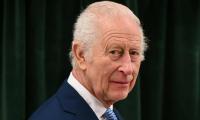On January 21, one of the main US diplomats for South Asia, Ms Alice Wells, repeated her criticism of CPEC, which came across as schooling Pakistan on why CPEC was a bad deal for Pakistan, and how Pakistan and Pakistanis are mistaken about the transformational impact that CPEC is believed to have had over the past five and a half years.
Since this is the second time the US diplomat has talked this way about CPEC, the first time being at Washington-based think-tank on November 21, 2019, it is now important to set the record straight.
It is out-of-place for a third country to comment upon such internal or bilateral matters, as that is tantamount to interference.In Pakistan, politics is very divisive and it is generally a daunting task for all political parties to have a consensus on a particular issue. However, our relationship with China and the China-Pakistan Economic Corridor is one such instance that is seen as having all political stakeholders and institutions on the same page.
As Prime Minister Imran Khan, when asked about the China-Pakistan Economic Corridor in an interview to CNBC on the sidelines of Davos, rightly said, “We are really grateful to the Chinese, they came and rescued us. This is nonsense that we are indebted to China”. The PM Khan spoke on behalf of Pakistanis, who do believe Pakistan is fortunate to be a part of the flagship project of the Belt and Road Initiative.
There are five other corridors in the BRI, which include East Asia, Central Asia, Middle-East and Europe, but Gwadar is the pivot of the BRI – the converging point of the Silk Road Economic Belt (the land route) and the 21st Century Maritime Silk Road (the sea route). Since the start of CPEC, Pakistan has bounced back, both in its strategic relevance as well as a top investment and tourist destination.
Prior to 2013, Pakistan was seen through the prism of a conflict zone, Taliban and extremism. Today, China has inspired confidence in other countries to come to Pakistan. Saudi Arabia and the UAE are establishing oil refineries in Gwadar; Qatar is making a $3 billion investment, and countries like Germany, Iran, Australia have publicly expressed their interest to participate in CPEC.
Rather than being embroiled in a debt-trap, CPEC has been a breath of fresh air for the Pakistani economy. The loans that are part of CPEC are concessional loans, usually ranging from 2-2.39 percent in interest rates, with a 20-year payback period (not to mention the 10-year grace period) in returning the loans. As of now, CPEC-related loans constitute less than 7 percent of Pakistan’s total external debt – $4.9 billion out of a total debt of $74 billion is owed to China; the rest is attributed to multilateral institutions.
Since the first phase of CPEC were energy investments based on the mode of Build Operate and Transfer (BOT), the successfully completed CPEC projects have added approximately 5,320 MW to the national grid, almost 30 percent of Pakistan’s total power generation. The energy investments in CPEC were made under the Pakistan government’s ‘2014 Upfront Tariff Policy’, which was across the board and non-discriminatory for all international investors. The Chinese companies seized the opportunity and got tariffs which any other Pakistani, American or for that matter Japanese investor would have gotten should they have also chosen to invest in Pakistan’s power sector.
Over 75,000 Pakistanis have been given employment since CPEC began in 2013. Just the Sukkur to Multan Motorway, a key road project of CPEC, employs 29,000 Pakistanis. The 1,320 MW CPEC power plant in Karachi’s Port Qasim, which is owned 59 percent by a Qatari consortium and 31 percent by the Chinese company, Power China, employs 150 Pakistani engineers who have been trained in China as well as over 4,000 local employees.
The Thar desert which was considered a barren, futile area with poor quality coal, is producing 660 MW worth of power via CPEC. Today, it has become a case-study for women’s empowerment as 126 women from the Hindu minority drive coal dumper trucks. The Thar power plant is a public-private partnership project among the Sindh government, a Pakistani company and a Chinese state-owned enterprise whose shares are less than 10 percent.
CPEC has changed lives, and transformed Pakistan, and is a testament to Pakistan’s all-weather strategic partnership with China. The persistent attempts to dissuade Pakistan and Pakistanis about CPEC by articulating a narrative based on misleading information is outside the ambit of professional diplomatic responsibilities. Islamabad has plenty of excellent experts from China and Pakistan who are capable of lecturing on CPEC.
This sort of criticism of CPEC reflects the American insecurity regarding China’s increasing clout in the region. This narrative is part of the larger US ‘Pivot to Asia’ policy, which essentially aims to contain China. The best way to for the US to compete with China would be to replace the criticism against CPEC with a people-oriented, investment deal, with no strings attached, that would be of interest to American enterprises and the Pakistani economy.
When Pakistanis compare the historically transactional relationship with the US with the steadfast consistency shown by the Chinese, which has now culminated into CPEC, it is not difficult to choose their main strategic partner.
The writer is the executive director of the Pakistan-China Institute.
An AI-powered robot waves at the onlookers at a tech show. — AFP/FileNine years ago, between March 9 and 15, 2016,...
Their children are also more likely to survive childhood, be healthy and attend school
Report notes that country has 800,000 heroin users and most commonly abused drugs are cannabis, heroin
Europe has vowed to stand with humiliated president in solidarity
On January 29 this year, mid-air collision, first major US aviation accident since 2009, challenged this optimism
Until these ideological foundations are dismantled, cycle of extremism will continue







